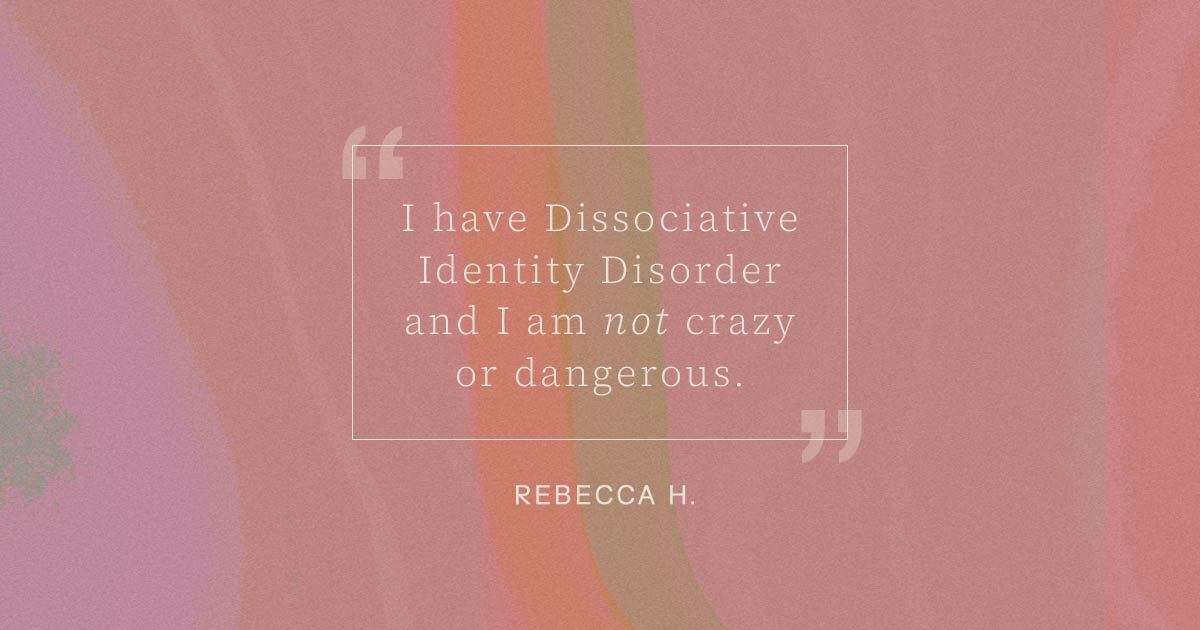I have Dissociative Identity Disorder. I’m not crazy. I’m not dangerous.
Let me repeat that.
I have Dissociative Identity Disorder and I am not crazy or dangerous.
DID is one of the mental illnesses with the most stigma and misinformation. DID develops when you have experienced severe, prolonged trauma as a child. A child’s brain is still malleable and their personality is still in development. As a result, their brain is able to create alternate personalities (called “alters” or “parts”) to separate and hold the trauma. Together they form a DID system. My system has over 100 alters but some systems only have one or two. And others have thousands. It’s different for every system.
My alters revealed themselves to me when I was 28. Before that, I had no idea they existed. I was a mess and had all the symptoms of abuse but masked those symptoms with self-harm, an eating disorder, and suicidal ideation. When my alters revealed themselves, it was difficult and chaotic and I was so very confused. I had no idea that I had been abused, so coming to terms with that reality was utterly difficult.

Three years into knowing my alters and that I have DID, things are going a lot more smoothly. We are learning to work together as a team instead of my alters fighting to be out and in control. Nevertheless, it can be quite chaotic, especially when my alters get triggered into flashbacks or trauma reactions. Each of my alters holds something different and having so many means LOTS of opportunities to get triggered. Some of my alters are protectors and they do everything they can to keep the rest of the system safe. If they sense danger or injustice or unkindness, they become active. Some are really young, traumatized kids. Others are helpers whose purpose is to support those traumatized kids and help me navigate life.
The media portrays people with DID as dangerous but none of my alters would hurt a fly. I mean that literally. If we are walking on a sidewalk and see ants, we walk around to avoid harming any of them. Why? Perhaps because we know what it feels like to endure deep pain and would never want to cause even any ounce of it. When an alter is “out” instead of me, I’m not “out of control”; I don’t suddenly become dangerous. DID systems are filled with traumatized kids and protectors and helpers and are more focused on just trying to live safely above anything else.
DID doesn’t have to be scary. I like to look at it as a really amazing way the brain helps children going through severe, prolonged trauma survive.
For more from author and mental health advocate Rebecca Hilliard, follow her on Instagram and TikTok.
Your diagnosis is not the end of your story. You are capable of living with DID. Healing is still possible. We encourage you to use TWLOHA’s FIND HELP Tool to locate professional help and to read more stories like this one here. If you reside outside of the US, please browse our growing International Resources database. You can also text TWLOHA to 741741 to be connected for free, 24/7 to a trained Crisis Text Line counselor. If it’s encouragement or a listening ear that you need, email our team at [email protected].
Anna
I am so excited to see TWLOHA post about DID. It is not rare like people think. If 1 in 3 children is sexually abused (not to mention physically and other ways) then at least 1 in 3 people have a chance of becoming DID. Alters just know how to hide and how to protect themselves.
Thank you thank you for talking about this so openly!!!
Simone Parkinson
I suffered unknowingly with DID for decades until I got connected with a great psychiatric nurse at age 45. She helped me to integrate my 5 alters into one stable personality. It takes a lot of work and awareness but never doubt that integration is possible. My therapist is retired now but there is help available in British Columbia Canada.
I am also aware of a fabulous program that combines therapy for DID and BLP in a single program in Seattle, WA.